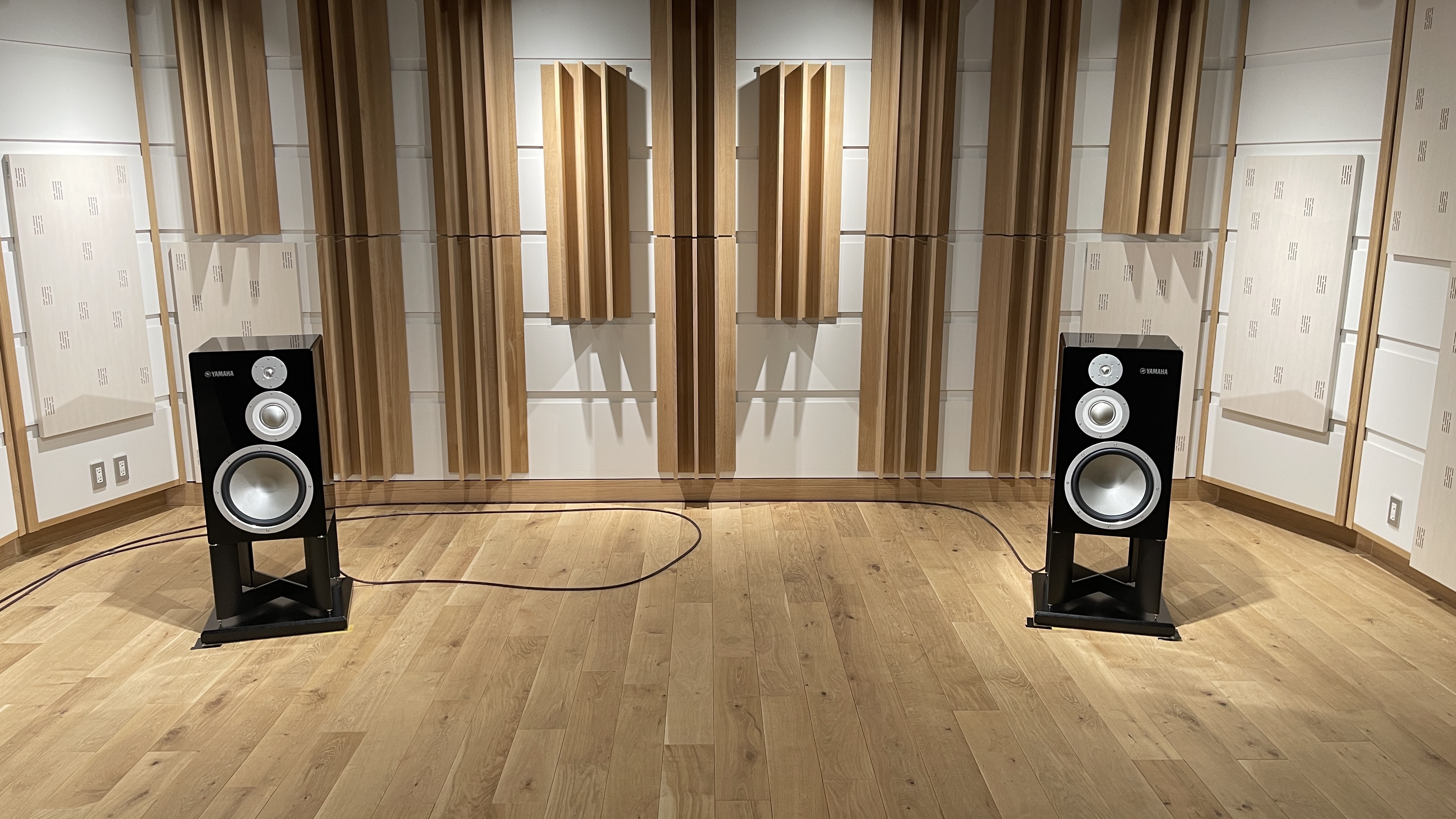What Hi-Fi? Verdict
Incredible images and stunning sound combine to make the OLED984 worthy of its eye-watering price tag
Pros
- +
Crisp, dynamic picture
- +
Accomplished audio
- +
Genuinely stunning design
Cons
- -
Motion processing issues
- -
Confusion around catch-up apps
- -
No HDMI 2.1
Why you can trust What Hi-Fi?
Few TVs arrive with higher expectations than the 65OLED984 (or OLED+ 984 as it’s often referred). And for good reason – this is the most advanced TV that Philips produces and it’s partnered by B&W’s most advanced TV speaker system.
This OLED TV supports both Dolby Vision and HDR10+ and has a Dolby Atmos audio system designed by one of the most well respected hi-fi companies around. It also looks gorgeous and throws Philips’ wonderful Ambilight tech into the bargain. What more could you ask for?
But this degree of wishlist fulfilment comes at an eye-watering cost. The Philips 65OLED984 is vastly more expensive than the 65in version of Panasonic’s GZ2000, which is itself much more expensive than the Award-winning LG C9. All of which means that it needs to be seriously brilliant.
Features
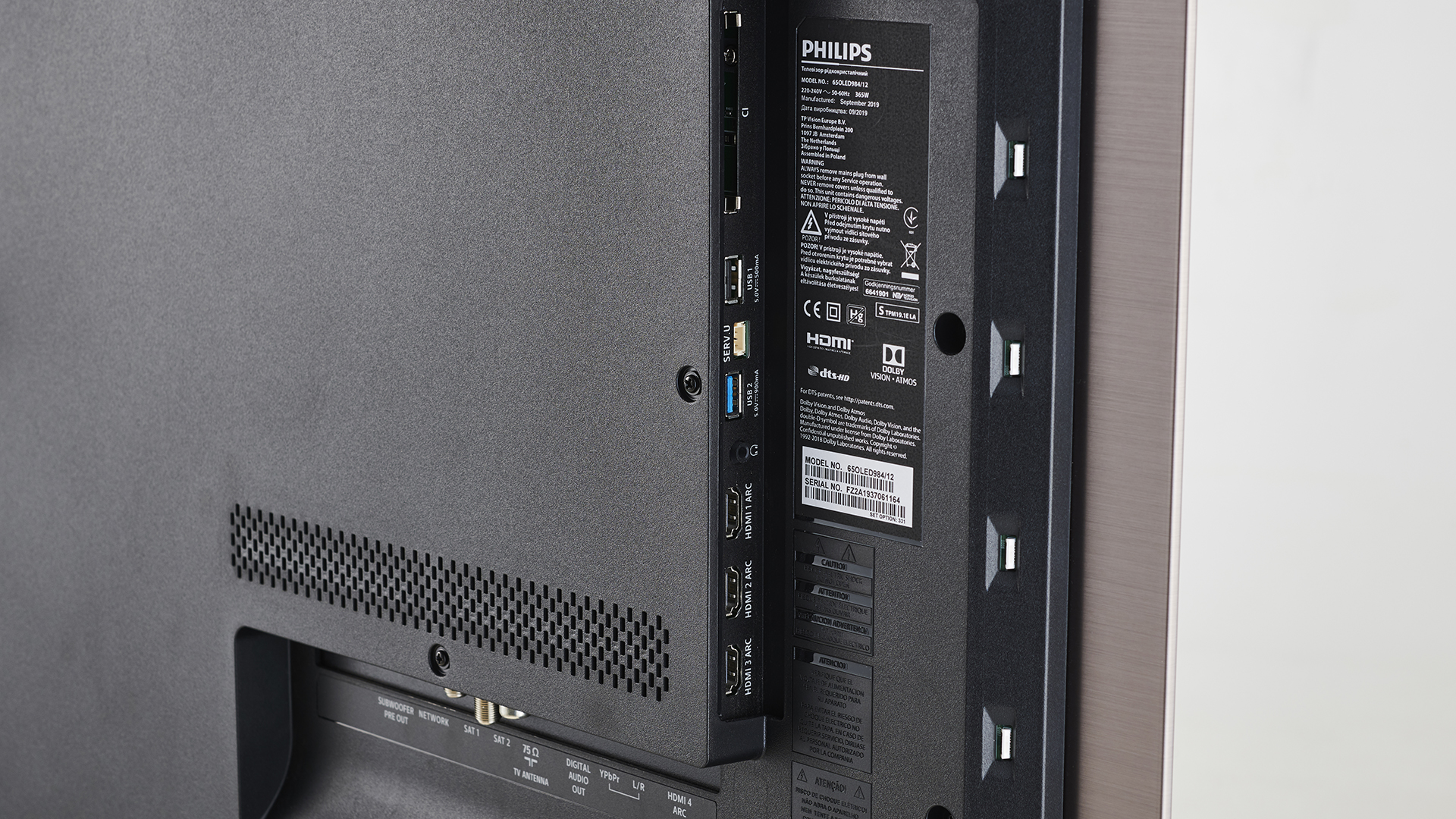
The 65OLED984 looks unlike most TVs. Not in terms of the display itself, which is the usual slab of 16:9 ratio screen framed by fabulously thin bezels, but in the fact that it’s a free-standing set, with the OLED panel perched on top of a thin, floor-standing pedestal that also incorporates a soundbar.
In fact, soundbar might be the wrong word, at least as far as B&W is concerned. That’s because the enclosure below the screen contains only passive speaker drivers and no electronics – processing and amplification is all done within the TV’s main chassis.
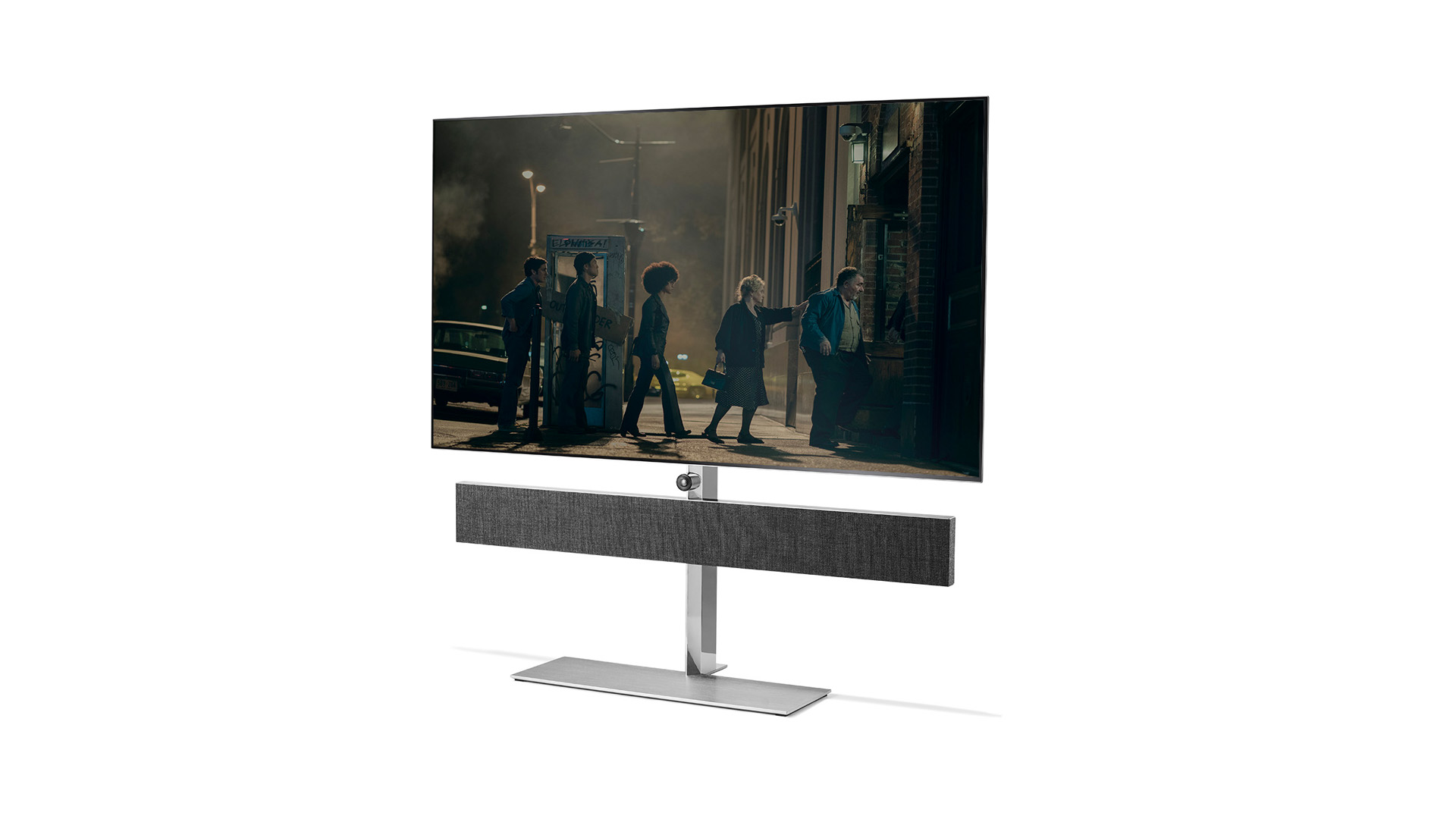
Screen type OLED
Resolution 4K
Operating system Android TV 9.0
HDR formats HDR10, HDR10+, Dolby Vision, HLG
HDMI x4
USB x2
Optical x1
But for reasons known only to Philips and B&W, the IR sensor for the remote control is in fact secreted in the lower-right corner of the speaker unit, ensuring that it and the TV cannot be separated. No-one is going to spend this much money on a TV with an expensive integrated sound system without intending to use it, but it would be nice to have the option to split the two if, for example, you wanted to combine the screen with a full home cinema system at some point in the future.
Still, as an all-in-one solution, this is delightful, with the stalk of the stand positioned at the back of the floor plate so that it runs up the wall if positioned against one. If you choose to wall-mount, there’s a bundled bracket and the part of the stand below the speaker detaches.
Between the main speaker section and screen is a circular unit that from a distance could be mistaken for an old-school on/off button but is in fact a tweeter. Bowers & Wilkins introduced the ‘tweeter-on-top’ concept to hi-fi speakers back in 1977, but this is the first time the approach has been used on a TV. The idea is that by separating the tweeter from the cabinet it will be less susceptible to diffraction effects and therefore produce a cleaner, more even sound.
Behind the classy fabric cover of the big, main speaker enclosure are three discrete speakers for left, right and centre channels. There’s a subwoofer output on the rear of the set, too, should you feel inclined to turn this 3.0 system into a 3.1 system. We don't expect you will.
Each of the speaker channels is decoupled from the body of the TV and isolated from its neighbour to reduce unwanted vibrations, and each features a 10cm mid/bass driver derived from B&W’s excellent M-1 satellite speaker. The left and right units also feature their own tweeters, which are pushed to the extremities of the enclosure to help reduce diffraction and create a wider spread of sound.
It’s worth pointing out that the OLED984 is not wafer-thin in the way of some OLEDs. The drivers used here are much bigger than is normal for a TV and that means that the speaker enclosure is rather thick. The plastic casework on the rear of the TV panel is a little thicker than most and covers a larger area, too, presumably at least partly as a result of the Ambilight system it houses.
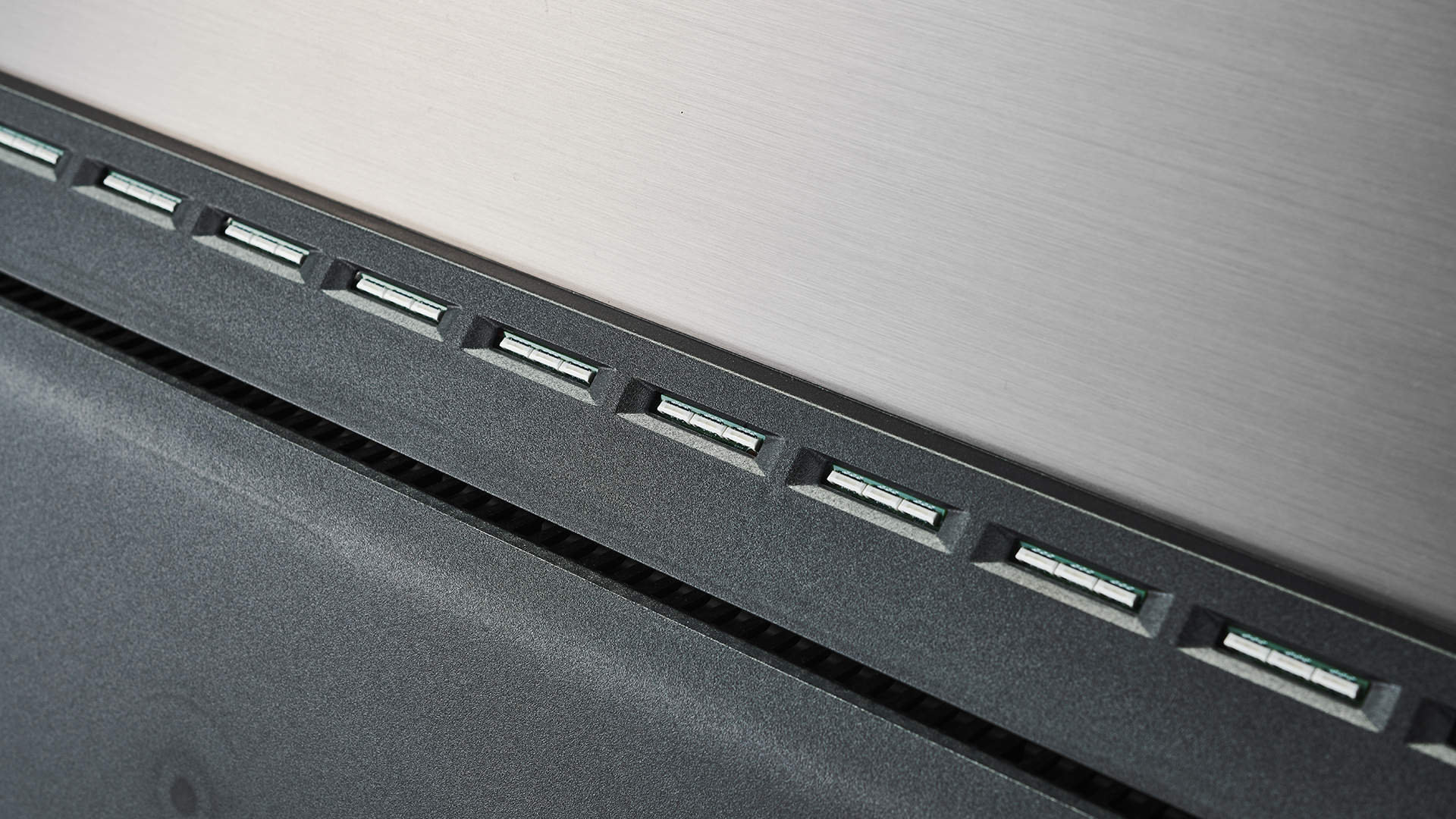
The neck upon which everything is mounted (and which contains hidden cable channels) adds yet more thickness. The overall depth of the set when wall mounted is 14.2cm. If free-standing, the footplate takes this measurement to 38.2cm. But the OLED984 isn’t designed to take up as little space as possible – it is designed to make a statement.
While it’s easy to focus on B&W’s speaker system, the OLED984 is a rather special TV, too. This is the most advanced OLED that Philips has produced, combining the same LG-sourced panel that all manufacturers currently use with Philips’ own P5 Pro Perfect Picture Engine.
Like Panasonic, Philips supports both Dolby Vision and HDR10+, as well as standard HDR10 and HLG. You’ll find content in both HDR10+ and Dolby Vision on the integrated Amazon Prime Video app, and more Dolby Vision on Netflix. Rakuten and Google Play Movies & TV both offer pay-as-you-go movies in the standard HDR10 format. The rest of the app selection includes the likes of Plex, VLC, Spotify and Tidal, but there’s no Apple TV app or Now TV.
There’s also some confusion regarding the UK catch-up apps. All four of them (BBC iPlayer, ITV Hub, All 4 and My5) are available on our sample. However, we've been told that Freeview Play was mistakenly added to the TV as part of the most recent software update and could well disappear soon, along with some or all of the catch-up apps. BBC iPlayer should remain available, but there are no guarantees regarding the others.
This isn’t Philips’ choice, but is apparently due to negotiations between Freeview Play and Google (the Philips runs the Android TV operating system). It’s worth noting, though, that Sony overcomes such issues by building YouView into its own Android TV models, which ensures all of the catch-up apps are present.
Broadly speaking, Android TV is now a pretty good TV operating system, with a decent amount of customisation and value-added features such as Chromecast and Google Assistant, but it is still a fair way short of the bespoke operating systems of Samsung and LG and feels less like the heart and engine of the user experience and more like a source.
Press the Home button while watching something and rather than being presented with an overlay of shortcuts to content and settings, it’s more like switching inputs. You can’t simply go back to what you were watching by pressing the back button or Home again, either: you have to click the source button and select the input again or open the app once more. This is especially annoying when watching Amazon Prime Video as the app loads from scratch when you click the app icon, leaving you to scroll the menus to reopen what you were just watching. It’s just not as seamless as it should be.
On the subject of inputs, the Philips’ four HDMIs are 2.0-certified, rather than 2.1. That’s not unusual at this point, but it is a shame for such a premium TV, particularly when all of LG’s 2019 OLEDs have full HDMI 2.1 sockets. Philips argues that most HDMI 2.1 features are unnecessary right now, and while it isn’t wrong, someone forking out this amount of money for a TV might anticipate it lasting a number of years, at which point the lack of HDMI 2.1 features such as VRR (Variable Refresh Rate) and eARC (Enhanced Audio Return Channel) could become an issue.
The OLED984 does at least have an Auto Game Mode that switches to the Game picture preset when it senses a signal from a console. That reduces input lag to 33ms, which, while not super-low by current standards, will be imperceptible to most gamers.
Picture
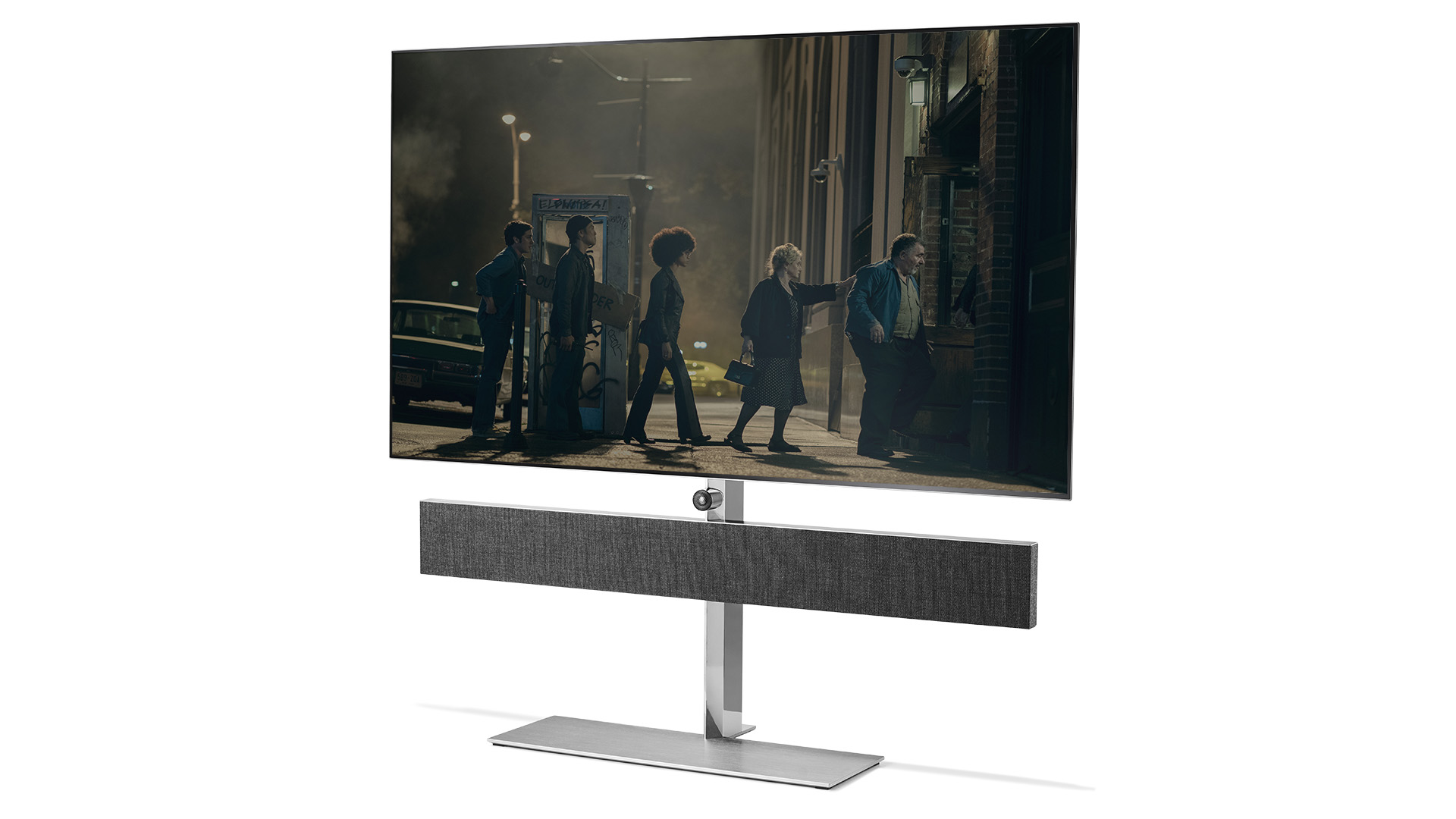
Philips insists that the Vivid picture preset, which switches all of the TV’s processing modes up to almost maximum, results in the best picture. But, while Vivid performs impressively with Philips’ demo video footage, we find it a little over the top with content such as HDR movies and standard TV. Ultimately, you can start with Vivid and tone it down or start with Standard and pump it up - the results are the same.
The options available for you to tweak will depend on the content you’re playing (Dolby Vision, standard HDR or SDR) but, starting with Vivid, the broad advice is to drop Colour down, turn off Perfect Natural Reality, ensure the Light Sensor is off, switch Ultra Resolution and Perfect Contrast off when the content isn’t 4K/HDR, and switch off the noise reduction.
The set’s motion processing also performs well with demo footage we’ve seen, but struggles with movies and TV. Even on its lowest setting we find ourselves regularly distracted by shimmer and noise around tricky motion. For example, in Guardians Of The Galaxy Vol.2, Meredith’s arms flit in and out of existence as she and Ego race past fields in the T-bar Ford Mustang, and there are lots of artefacts around Ego’s shoulders as they make their way through the woods.
In the first episode of The Witcher on Netflix, the hilt of Geralt’s sword shimmers as he walks through the halls of Stregobor’s palatial paradise. And the set struggles to keep track of the soldiers manning the machine guns on the military 4x4s as they race through the trees towards the end of Logan on Blu-ray. The only solution is to turn the motion processing off entirely, even though this results in a fair amount of judder and blur. In the long run, we find that less distracting.
The good news is that the motion processing is just about the only element of the OLED984’s picture performance that isn’t utterly brilliant. In terms of detail, sharpness and contrast, there is currently no better TV. The sky at the opening of Guardians Of The Galaxy Vol.2 has never looked better, with clouds beautifully drawn and shaded. There’s incredible three-dimensionality to the scene.
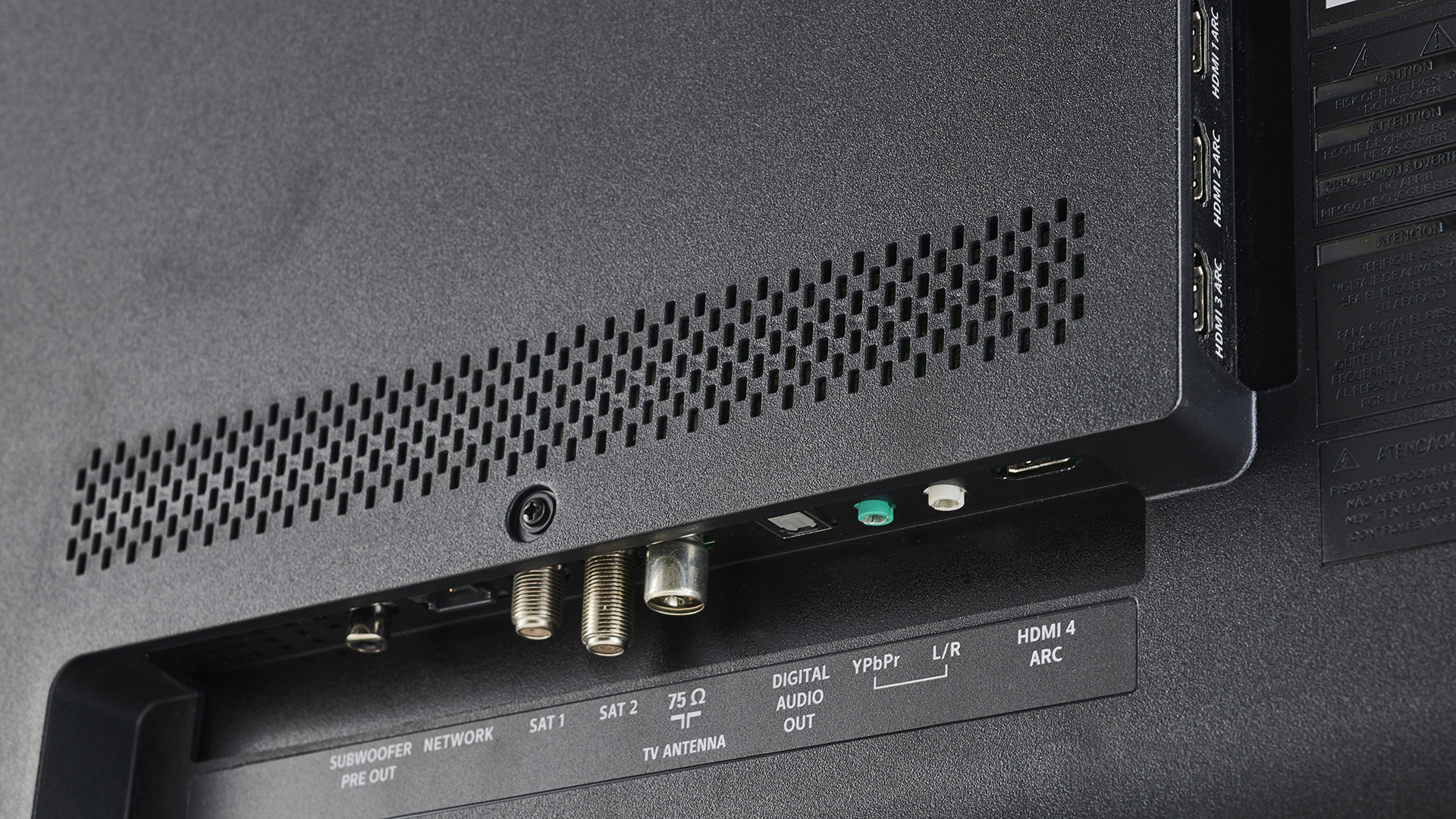
But while the Philips is obviously enhancing the image more than rival sets from Panasonic and LG, you’re not made aware of that enhancement in a negative way. Edges are crisper, details are brought to the surface and contrast is more pronounced, but nothing seems artificial.
We spend the best part of two days watching HDR movies and TV shows, from Guardians, Ad Astra and Alien Covenant on 4K Blu-ray, to streams of The Witcher, Jack Ryan and Blade Runner 2049, and the Philips consistently blows us away with its vibrant, punchy and pin-sharp delivery.
It’s similarly impressive with SDR, too. We find the Perfect Natural Reality, Perfect Contrast and Ultra Resolution options a little over the top and unnatural. But even with all three features switched off, this is a much punchier, more dynamic and three-dimensional performer than even the brilliant Panasonic GZ2000B. It’s crisp, too, but clean and natural with it. If we were to pick holes we’d say that the colours are probably a little richer than is truly authentic, but that richness is so pleasant, it's not really a negative.
Switching to standard-def from the integrated tuner, our tweaked Vivid mode still produces a nice picture. It’s easy for a set to dazzle you with the bright colours of the Pointless set, but the Philips is just about spot on. It’s a strongly defined and clear picture, although there’s some noise that’s more noticeable the closer you sit. If you find this to be a problem, you can switch on the Noise Reduction, which improves things significantly.
Let’s not forget that everything you watch is accompanied by beautiful Ambilight, which extends the light from the screen onto the wall behind it. It draws you into the picture, makes the screen seem bigger and increases perceived contrast. Unlike most Ambilight TVs, which have strips on the left, right and top edges, the OLED984 also has a strip along its bottom to complete the effect.
Sound
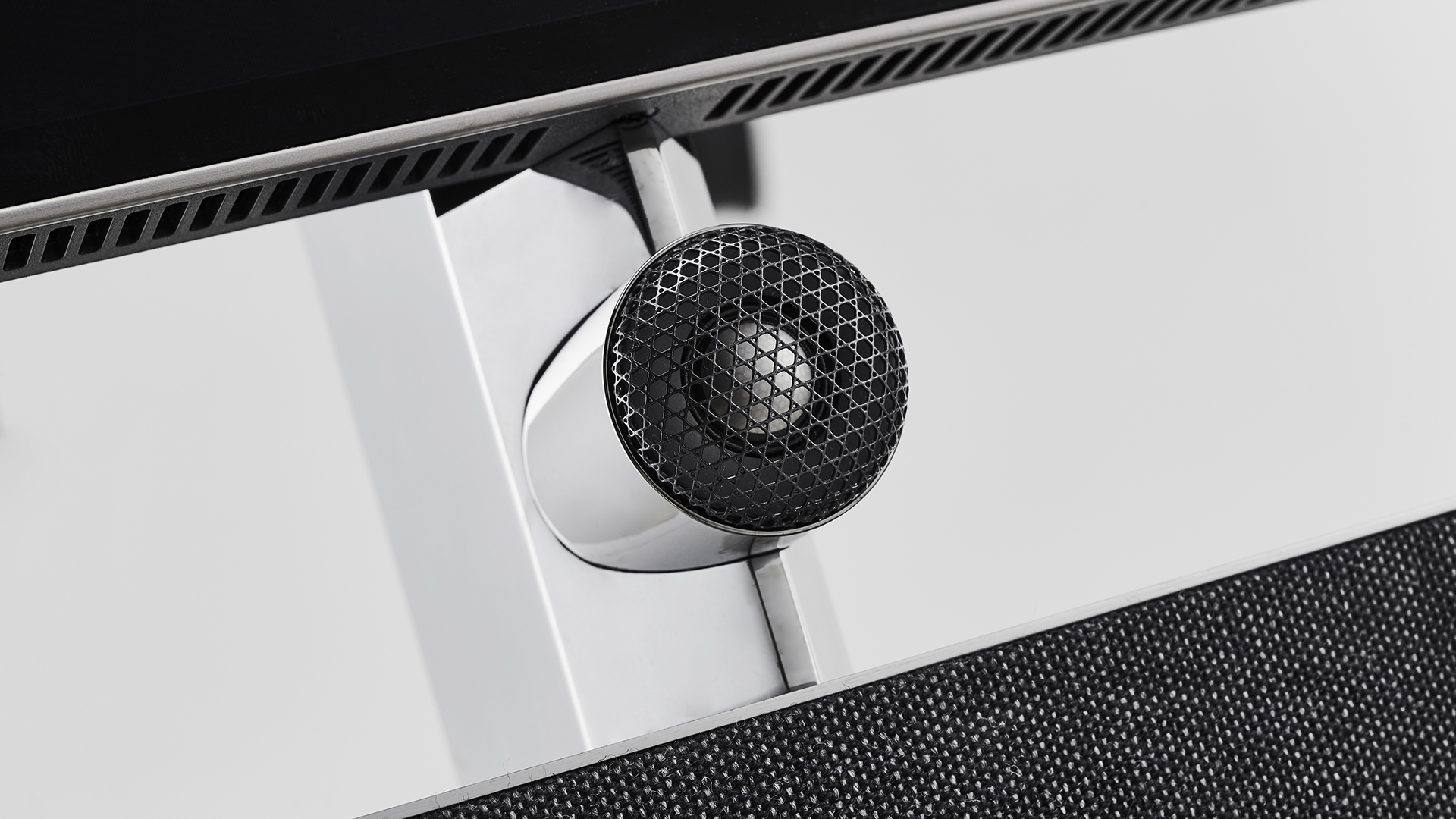
So, what about the sound that you’ve paid so much extra for? The idea is that the OLED984 is a complete system for everything you watch and listen to, including music. Sure enough, this is comfortably the most musical audio performance of any TV we’ve tested.
Compared to the Panasonic GZ2000, itself a good-sounding TV, the Philips is vastly more open, spacious and rhythmic, with a genuine soundstage that boasts precisely placed instruments and effects. The delivery is crisp, taut and punchy, with detail and dynamics hitherto unheard from a TV sound system.
Play Funeral by Phoebe Bridgers and there’s real texture and nuance to the vocal and you can hear the echo and reverb of the recording studio. There’s much more insight than we’re used to from a TV, and it makes the Panasonic sound a little uncouth by comparison.
Switch to a Dolby Atmos soundtrack and the Philips continues to impress. The Panasonic’s rear-mounted, upward-firing speaker adds a little more height to proceedings than the OLED984, but it’s a big, room-filling sound, with effects that stretch a long way to the left and right of the screen without directness or focus being lost. It’s also significantly more dynamic, cleaner and more natural.
Tonally, it’s a balanced performance, with sweet treble giving way to a textured midrange and on to weighty and solid bass. Some might crave the sofa-shaking low-end of a subwoofer, but the bass of the integrated drivers is more than deep enough to satisfy most people.
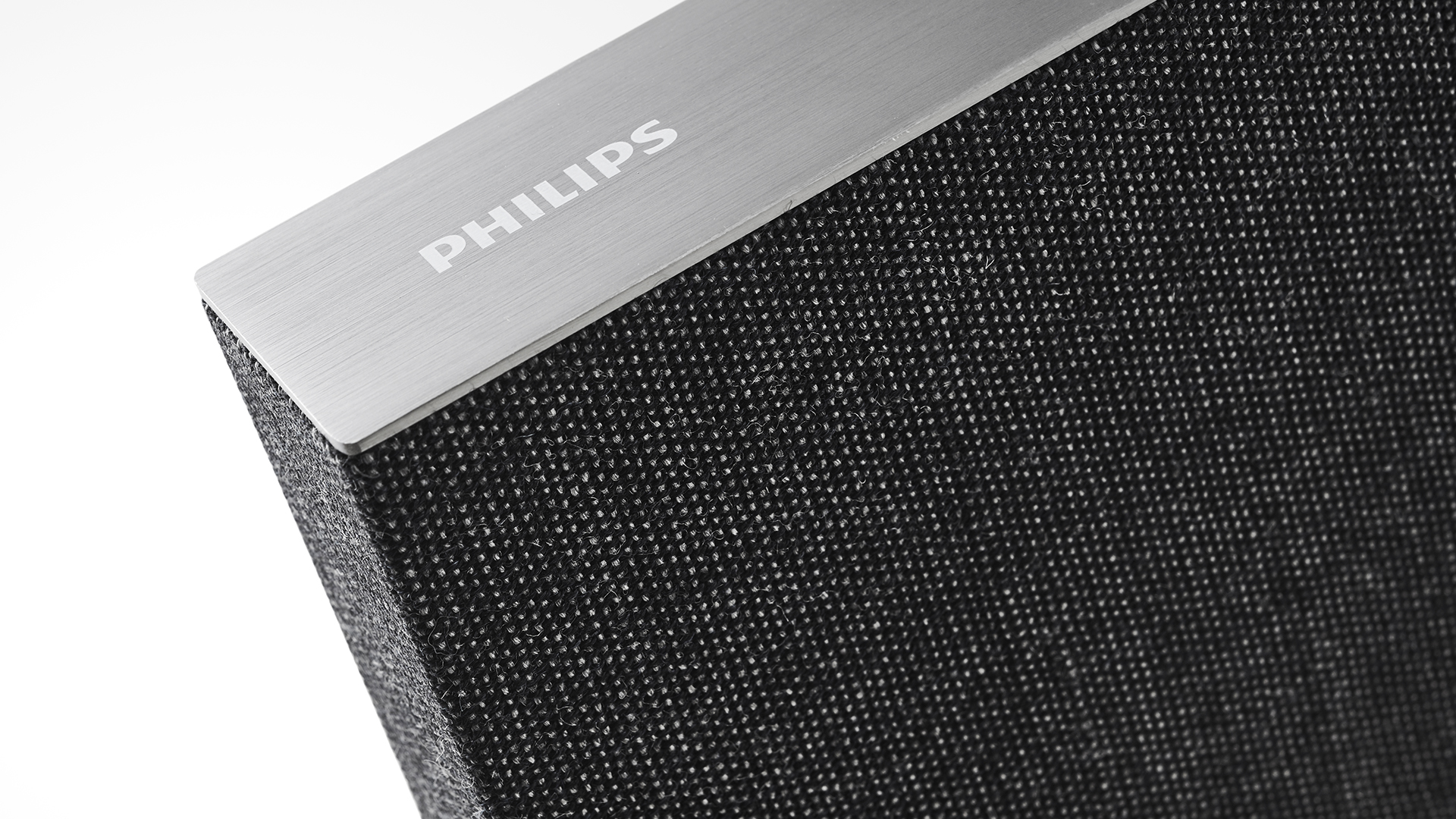
It’s worth noting that there are a number of sound modes, but that we find Music to be best for stereo music and Movie to be the best option for pretty much everything else. The AI mode is designed to automatically adjust the sound based on what’s playing but, while it produces a perfectly good sound in its own right, we find it a little less authentic than Music and Movie.
It’s also worth remembering that the OLED984 is currently around £1500 more expensive than the OLED934, and almost all of that extra cost is for the speaker system. It’s a lot to spend but, perhaps surprisingly, it’s still broadly good value. Yes, a true hi-fi system will sound more musical, but it won’t be as immersive with movies. Meanwhile, a premium soundbar, such as the mighty Sennheiser Ambeo, will make movies sound bigger and more enveloping, but won’t be as good with your music.
Verdict
We were hoping that the Philips 65OLED984 would be something special, and that turns out to be the case. This is a fabulous TV conjoined to one of the best ‘soundbars’ we’ve heard, and the result is an all-in-one system unlike any other.
There are some minor flaws around apps, motion processing and HDMIs, but they don’t detract from the broadly overwhelmingly stunning performance. If you have a big enough budget and the desire to make a seriously stylish statement, this is the TV for you.
SCORES
- Picture 5
- Sound 5
- Features 4
MORE:
Read our Panasonic TX-55GZ2000B review
What Hi-Fi?, founded in 1976, is the world's leading independent guide to buying and owning hi-fi and home entertainment products. Our comprehensive tests help you buy the very best for your money, with our advice sections giving you step-by-step information on how to get even more from your music and movies. Everything is tested by our dedicated team of in-house reviewers in our custom-built test rooms in London, Reading and Bath. Our coveted five-star rating and Awards are recognised all over the world as the ultimate seal of approval, so you can buy with absolute confidence.

